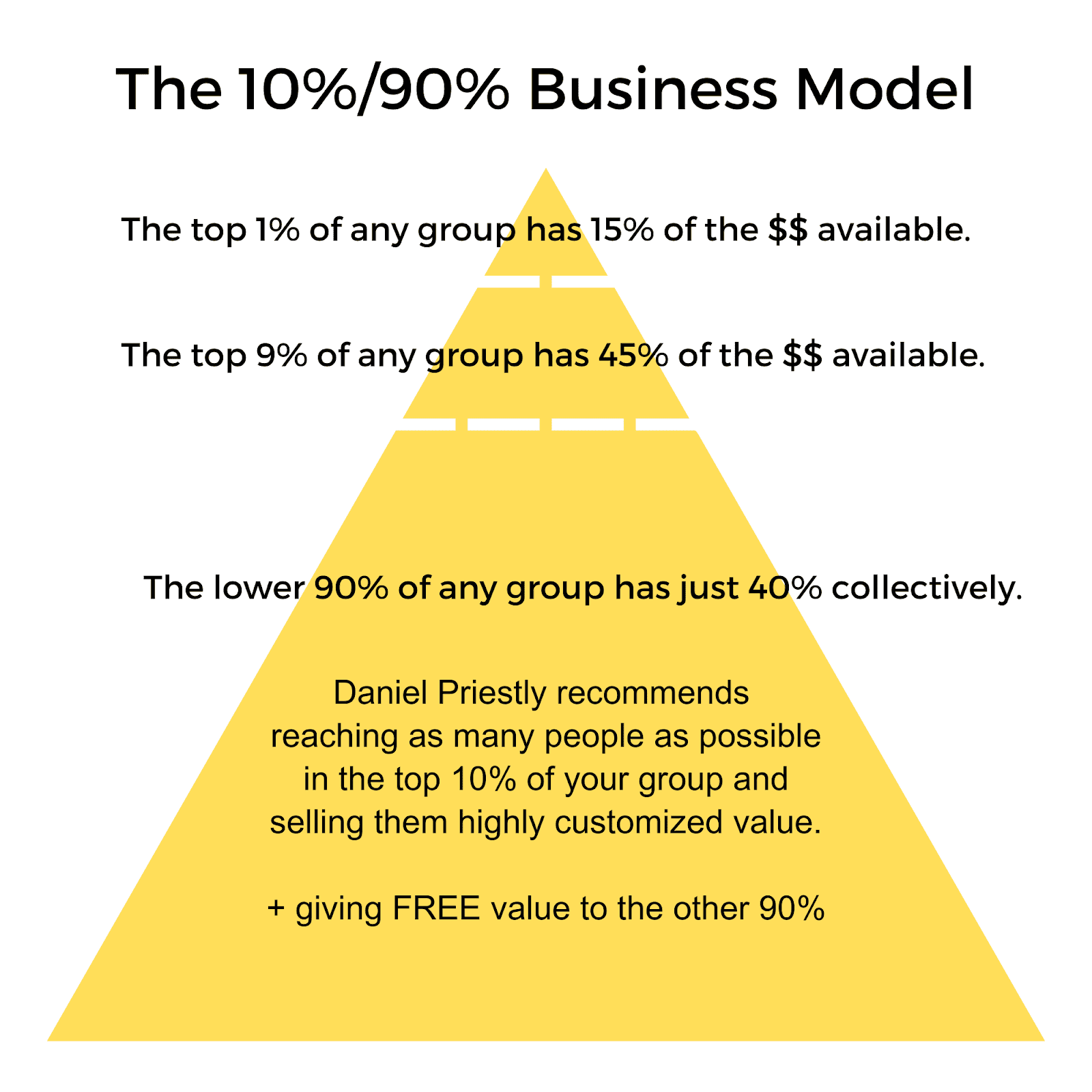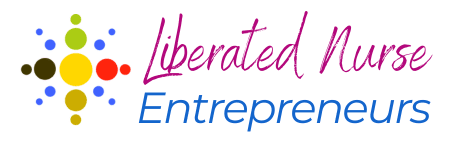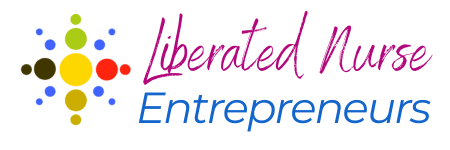Daniel’s Communication Framework
Known as “Dunbar’s Numbers,” humans can only remember about 1500 people’s names and faces and about 150 people in detail. So, how can you be among the remembered ones? Use this recipe:
NAME: Give your name and your business’s name
SAME: Give the listener a familiar “mental folder” you fit in, e.g., health coach, healer, etc.
FAME: Give a WOW factor that makes you stand out and be interesting
AIM: Give what your goals are for the next 90 days
GAME: Give what you want to achieve in the next 3-5 years
Then, Use the 7-11-4 Formula
[Seven hours and 11 interactions with you on four different platforms]
Parasocial relationships (know, like, and trust) occur when people feel they know you because they’ve had 7-11-4 with you.
Choose 4 of These Platforms to Give Your Audience Easy, Playful, or Adventurous Ways to Get the 7-11-4 Contact with You
(PAID) Audiobooks
(FREE) Emails, LinkedIn, Podcasts, YouTube, Paperback & PDF Books (give to your prospects)
TIP: You can reuse the same content on all of these platforms!
Use at Least Two of the Top 5 Things that Get Attention
Being familiar by using the 7-11-4 principle, described above
Being scary, strange, or sexy (These aren’t useful for most businesses.)
Providing free value that’s beautifully packaged (What’s the difference between being offered jewelry in a baggie and being offered the same jewelry in a beautifully wrapped box?)
Consider Using the 10%/90% Business Model
Based on research by Daniel’s company, the 10%/90% Business Model applies to any group and is fractal, meaning it holds no matter how much you divide it into parts.
In this model, the top 1% of any audience has 15% of the available money, and the top 9% has 45%. That means the top 10% has 60% of the available money, and the lower 90% has just 40% collectively.
Daniel recommends focusing our business activities on reaching as many people as possible in the top 10 percent of our audience's “money available” pyramid, offering them paid offers with highly customized value, and giving FREE value to the other 90 percent. The image below illustrates this concept.

How can we do this?
We make many free offers and include a way to identify the respondents who are in the top 10 percent of our group.
Think about this.
What might this model look like with your business idea?
How might it affect you and your life?
How might it affect the people in the top 10 percent of your audience who buy your program or service package?
How might it affect the people in the lower 90 percent who receive value from you for free?
Recommended Steps for Nurses Who Want to Start a Business
Step 1: Identify Your Passion or Purpose and a Problem You Can Help People Solve that Will Produce a Profit
Identify an area of Passion or Purpose that overlaps with a Problem you can help people solve and is in a market that will provide enough Profit for you to reach your financial goals.
Avoid extremes in any of the Passion/Purpose, Problem, or Profit areas so that you find the sweet spot where they all overlap. The image below illustrates this concept.
Step 2: Create Easy-to-Consume Free Content Your Audience Wants
Create free content that provides value to your audience and is easy to consume, such as the emails, LinkedIn posts, podcasts, and YouTube videos I mentioned earlier. Create content that invites play, exploration, or adventure. Track the topics of the content your audience engages with most.
Step 3: Invite Them to a Free Discussion that Provides Value
Invite them to a free discussion that provides value and require them to complete a beautifully packaged Application, Assessment, or Quiz (AAQ) to join the group.
This step increases the perceived value of the group. (Example: jewelry in a baggie vs. in a beautifully wrapped box)
Ninety-one percent of people say they are more likely to purchase from brands that provide offers and recommendations relevant to them. (1) So use the AAQ questions to give you data that confirms your audience's demand for your idea and helps you create a program or service package they want.
Most people trade time for money, but to be successful, you need to get paid for products. In this context, products include programs and service packages. They can be products you develop yourself, or you can sell other people’s products. The key is scale; time-for-money simply won’t scale because the more successful you become, the more you will run out of time.
The first step in breaking the “time-for-money” trap is acknowledging that it doesn’t work for anyone. Your clients don’t want your time; they want a result. You don’t want to sell your time; you want to earn money quickly while fairly delivering value.
A product delivers something consistently and can be delivered the same way in many locations. Productized services have a name, a method, and standards of delivery that trained employees or contractors can replicate.
Investing in personalization to build relationships creates better customer experiences. In a world where most companies are focused on improving personalization, companies that don’t prioritize creating a tailored experience risk being left behind. AAQs are fast, fun, and full of relevant information. They’re a solid win-win for all involved.
Step 4: Productize Your Demo and Customer Needs Analysis
Craft a DEMO of how you want to help people solve a problem. Give it a NAME so it presents as a product.
The demo explains the value of what you do. The demo shows the person how your product is the best path between their current reality and their desired reality. Include:
The features, advantages, and benefits of your product or service
How it works to avoid the obstacles that have stopped them (or that they’re afraid of)
The research that backs it up with data
Share an emotional story that tells people what’s possible
But, your product is not for everyone. So, provide a CUSTOMER NEEDS ANALYSIS that tells them whether or not this product is right for them. All of this can be done in person or online. It can even be automated, but it’s important to do it manually before you automate it so you learn as much as possible about your potential customers’ needs.
A Model for Nurse Coaches, Healers, and Other B2C Entrepreneurs
BEFORE YOU DEVELOP A PRODUCT OR SERVICE: Provide a free discussion group (in person or digital).
Ex: For my first Tuesday group, I can require a beautifully packaged AAQ to join. The group will have 15 minutes of teaching content, a handout, discussion, and Q&A.
Use the AAQ questions to give you data that confirms your niche audience's demand for the product and clarifies what they want and will pay for so you can develop a HIGHLY CUSTOMIZED PRODUCT.
Ex: See the recommended AAQ questions in the Situational Model below.
Based on the AAQ questions data and listening to the people in the discussion group, split test 15 or more highly customized offer messages with a simple opt-in form to join the offer’s waiting list. Segment their responses using tags or a similar method.
Example offers: Readiness/Starter Kit; Obstacles Course; Get Organized, Incubator
Only develop the most popular offer if it gets 15% or more opt-ins out of a collective 100 or more. If no option gets at least 15% of the opt-ins, generate and test new offer ideas until one gets > 15% of the responses.
Give the losing ideas away FREE or at a low cost. See the 10%/90% Model above.
A Variation for Nurse Consultants and Other B2B Entrepreneurs
Create a PAID offer of a DEMO package that meets your audience’s needs and includes gathering and analyzing the data.
Ex Customer: Store managers who buy coffee at wholesale price and sell it at retail price.
Ex Product: Coffee that increases your libido.
Ex PAID Demo Offer: Use an AAQ to learn about stores that buy premium coffees and qualify them to purchase your Demo Offer. Then, demo samples of your coffee to the store’s customers, gather data on them, analyze the data, and present it to the store manager. Your presentation will include an offer to provide the store with coffee, promotional displays, and introductory coupons, and you will ask for a contract in that presentation.
Situational Model (Hear Daniel about the Situational Model @ 38:00.)
The Situational Model is another way to look at the Buyer’s Journey. It has three main parts for the buyer:
Current Reality
Obstacles & Criteria
Desired Reality
You can uncover these parts of your buyer’s journey by learning about the four questions that buyers often ask themselves in the Exploration and Evaluation stages of their buyer’s journey:
Where am I now?
Where do I want to be?
What’s in the way?
What’s the path of least resistance to get where I want to be?
We need to learn this information and can’t reliably intuit it. So, we need to gather data from the people themselves.
When we ask our audience questions using the Situational Model, it helps us gather the data that helps us serve the people in our niche.
Best Questions for AAQ Data Gathering & Needs Analysis
Which (of these answers) best describes your current situation?
Which best describes your desired outcome or results from this product/service?
Which best describes why you’ve been unable to get that outcome?
What are you currently considering as the best way to get that outcome?
Then, follow the first four questions with three pricing questions.
What price do you feel would be fair to get your desired outcome?
What price would be so cheap that you would question the quality?
What price would be so expensive that you could not afford this?
Google’s Research on Why People Buy
Most marketers use the concept of the “buyer’s journey” and a “funnel” that attracts people to enter, guides them to consider their product, and then squeezes them until they decide to buy or jump out. Most of us feel dehumanized by that process.
In recent years, Google asked, “Why do people buy?” through a large-scale study analyzing consumer behavior online. The study focused on the complex decision-making process between buyers’ initial awareness and final purchase.
In 2020, Google's research found that the buyer’s journey and funnel concepts do not represent people’s experiences. They identified a “messy middle” that is nothing like a funnel or a straight line.
In this middle stage, people randomly experiment with ideas and flit from one shiny object to the next, often using a combination of online sources, such as search engines, social media, and review sites, to guide their decision-making process.
Image 1: What the “messy middle” can look like. Attribution for Image 1.
The messy middle is categorized as Exploration (broadly examining options), and Evaluation (comparing specific features and making filtering choices), and most people switch between exploring and evaluating many times before they decide to buy.
Google's research also highlighted how cognitive biases, such as the power of scarcity, social proof, and authority bias, significantly influence purchase decisions.
At some point, the person receives a marketing message that, if the product fits them and the timing is right, activates them into the buying experience.
Image 2: A prettier version. Attribution for Image 2.
Daniel recommends giving our audience lots of value, lots of playful, adventurous moments, and making frequent offers along the “messy middle” path that says, “If this fits you and it’s the right timing, here’s your opportunity to act.”
TIP: People are most likely to buy when they have a combination of logic, emotion, and urgency. Each business owner is strong at providing logical or emotional reasons to buy. And each of us has to work on getting good at the other two.
Click here to continue to Part 2 of this article.

